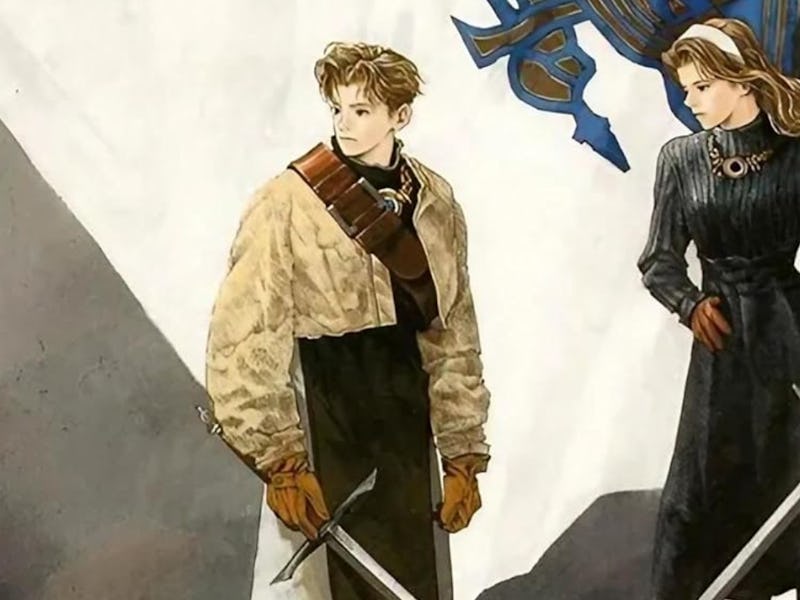Final Fantasy Tactics Might Not Exist Without This RPG Classic Released 30 Years Ago Today
A classic RPG that hasn’t lost its touch.

The recent release of Final Fantasy Tactics - The Ivalice Chronicles gives players an updated way to try one of the best tactical RPGs of all time. But for as great and as influential as Final Fantasy Tactics is, it also owes a huge debt to another great RPG from a Square competitor, which was remade itself, without which it may not even exist.
Tactics Ogre: Let Us Cling Together was released by developer Quest in 1995 on the Super Famicom. It would take three years for the game to get an international release, coming to PlayStation in 1998. By that time, Final Fantasy Tactics had already been released, cementing the impact of Tactics Ogre before Western audiences even had a chance to try it.
Tactics Ogre got a remake in 2022, making it easier to play on current consoles.
On the surface, the two games already have a lot in common. Both are tactical RPGs telling the story of complex battles between the political factions of their worlds. Both feature flexible class systems that demand players carefully build their armies to cover units’ individual weaknesses. And both explore how their protagonists’ choices play out in the world at large and change them as individuals. That could make it sound like Final Fantasy Tactics ripped off Tactics Ogre, but the connection is actually much deeper than that, as some of the key members of Tactics Ogre’s development team would go on to create Final Fantasy Tactics.
The best-known developer of Tactics Ogre is Yasumi Matsuno, the game’s director and writer. He’s widely credited with the success of the RPG, as its strong political story helped it stand out at the time of its release and still holds up today. Tactics Ogre tells the story of Denim Powell, a soldier in one province of the game’s setting who goes on to become one of the most important figures in its central conflict. Before the game’s start, the kingdom of Valeria is thrown into turmoil by the death of its king, which leads to civil war as multiple factions begin vying for control. The victor is the Kingdom of Galgastan, which divides Valeria into unequal portions, including the subjugated region of Walista.
Tactics Ogre: Reborn keeps the original game’s complex political story intact.
Powell starts the game as a member of a resistance group in Walista, fighting for freedom against the repressive leaders of Galgastan. From its setup, it seems that Tactics Ogre is gearing up to tell the story of the “good” resistance fighters of Walista rising up against the “evil” Kingdom of Galgastan. But what makes Tactics Ogre a classic is that it follows a very different path. Early on, Powell is ordered to commit an atrocity that Walista can blame on Galgastan, hoping to galvanize support for the resistance against the kingdom. Whether you choose to follow orders or rebel against your own leaders shapes the entire course of the game, with huge repercussions for the character of Powell and the entire conflict he’s caught up in.
Tactics Ogre itself is a sequel to Ogre Battle: The March of the Black Queen, a much different style of strategy game that recently inspired Vanillaware’s Unicorn Overlord. After the success of Ogre Battle, developer Quest decided to make a sequel, with Matsuno switching from a cancelled action title to the new strategy game. Matsuno was reportedly unhappy with leadership at Quest, and while he stayed on to finish Tactics Ogre, he left as soon as it was finished to join Square, bringing several members of the game’s design team with him to work on Final Fantasy Tactics.
Both the story and combat of Tactics Ogre set the standard for strategy RPGs going forward.
Tactics Ogre was a commercial and critical success in Japan for its original release, but it took several years to make its way overseas. By the time it was ready for its North American release, Tactics Ogre found itself in the release window for Final Fantasy Tactics. Its launch was thus pushed back to avoid having the two games competing for players. The release of Final Fantasy Tactics earlier in the year may have played a part in driving players to Tactics Ogre for the similarities between them, and multiple reviews at the time compare Tactics Ogre favorably to Final Fantasy Tactics.
With remakes of both tactics games available now, Matsuno’s two most beloved games are easier than ever to get ahold of for modern players. And while Tactics Ogre may be best known to some as the inspiration for Final Fantasy Tactics, it’s a fantastic strategy game well worth playing on its own merits.